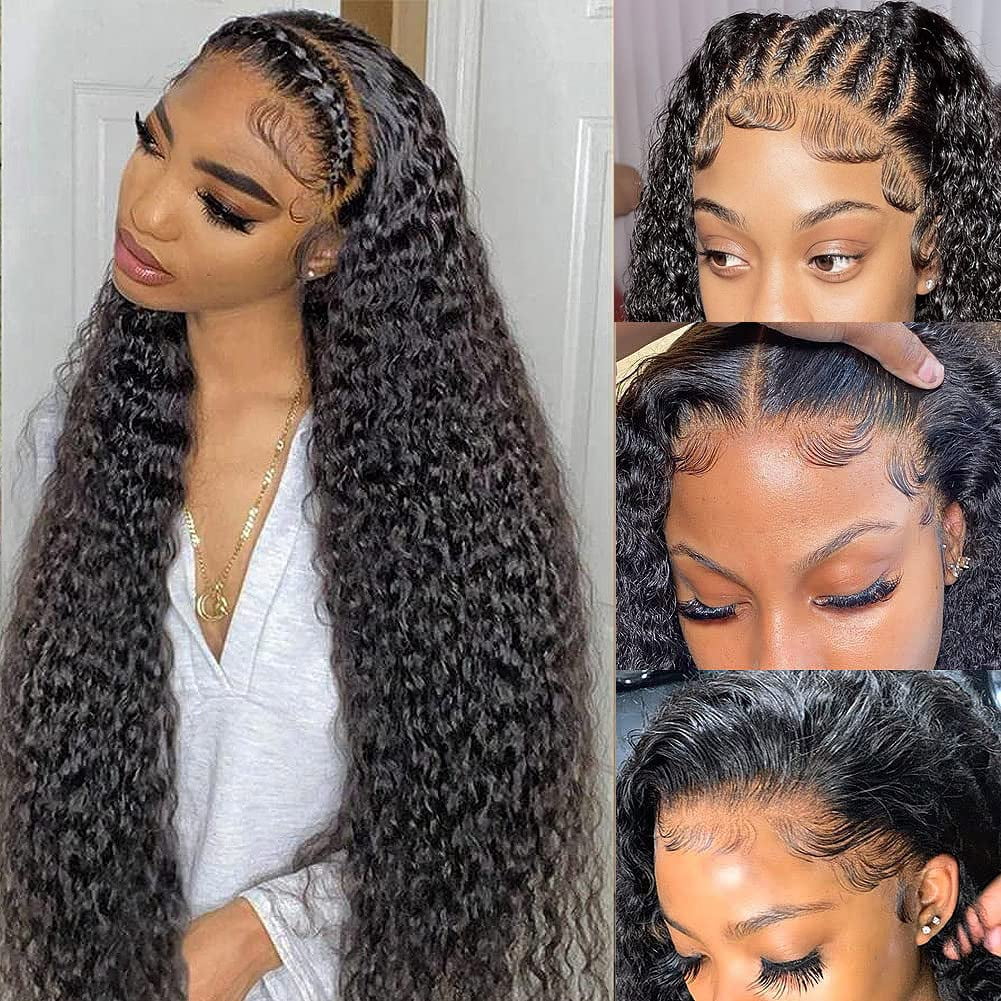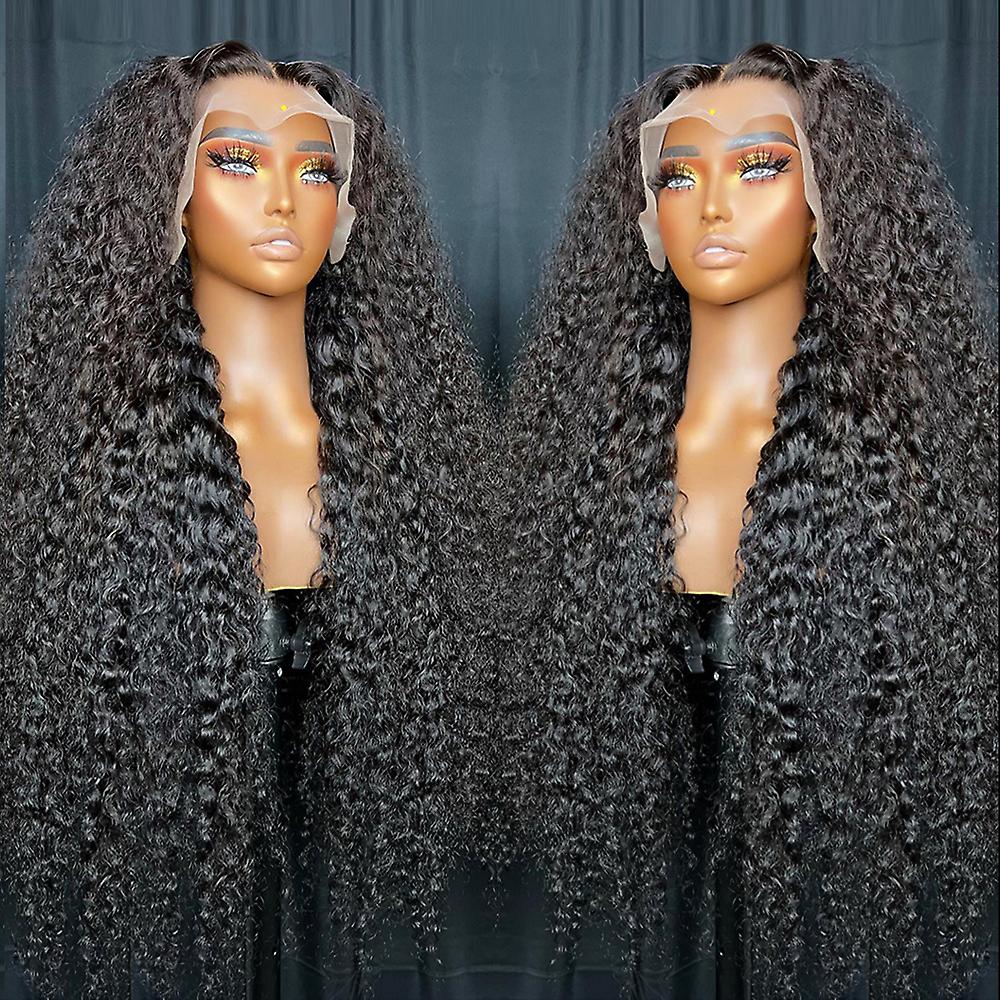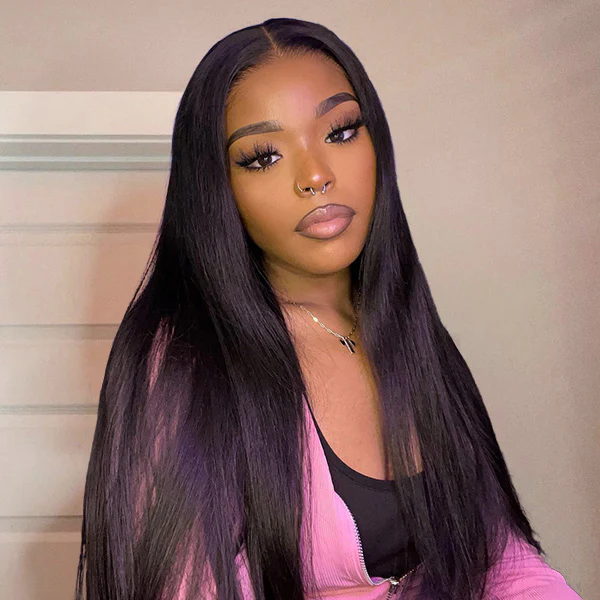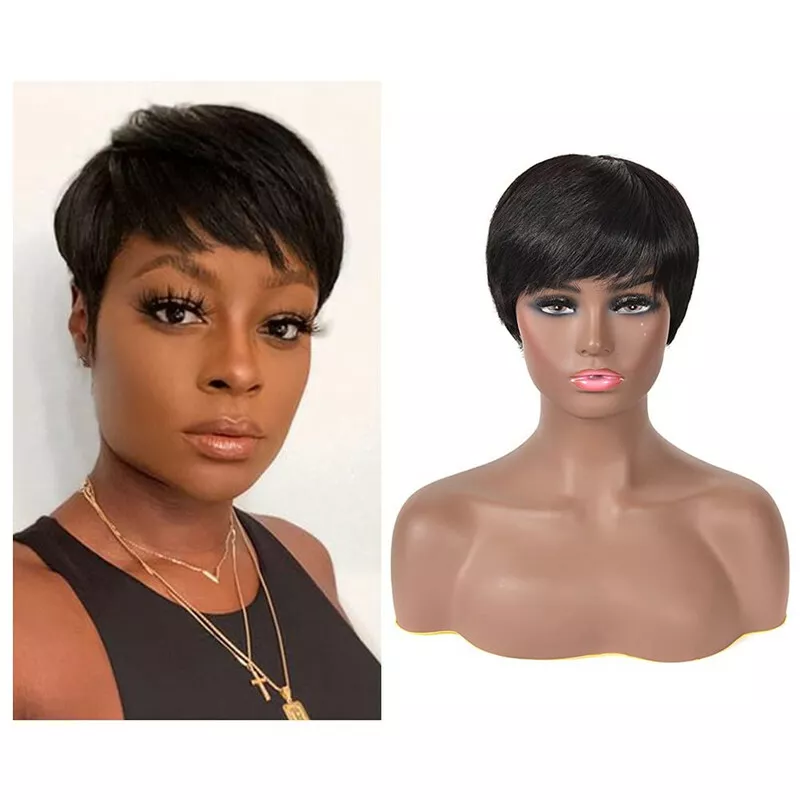
Choosing the Right Wig: Practical Tips
Understanding Different Types of Wigs
When delving into the world of wigs, understanding the different types available is crucial. Knowing your options will help you make an informed decision to match not only your style but also your needs and budget. Do you wear wigs?Here, we’ll explore the primary categories of wigs and the benefits they offer.
Synthetic Wigs vs. Human Hair Wigs
Synthetic Wigs: These are crafted from man-made fibers. They often require less upkeep than their human hair counterparts and can hold a style through different weather conditions. They’re also more budget-friendly, making them a popular choice for those who wear wigs regularly or want a variety of style options.
Human Hair Wigs: As the name suggests, these wigs are made from real human hair. They offer a more natural look and feel and are highly versatile when it comes to styling—the same way you would treat natural hair. However, they require more maintenance and can be on the pricier side. For those looking for a long-term, natural-looking option, human hair wigs might be worth the investment.
Custom and Ready-to-Wear Wigs
Custom Wigs: These are tailored to your exact head measurements and style preferences. They provide the most natural fit and look, but they come at a higher cost and usually require a longer wait time due to the personalization process.
Ready-to-Wear Wigs: Ready-to-wear or ‘off-the-shelf’ wigs are pre-styled and sized to fit most people. These wigs offer convenience and immediate satisfaction. They are also a great way to experiment with different looks without committing to the cost and time associated with custom wigs.
In conclusion, whether you prefer the ease of synthetic wigs or the authenticity of human hair wigs, or the exclusivity of custom units versus the accessibility of ready-to-wear options, there’s a wig out there for everyone. Ensure you consider your lifestyle, budget, and the amount of time you’re willing to invest in maintenance before making your choice.

Considering Wig Cap Construction
The cap is the base of the wig onto which hair is attached. It’s crucial for comfort, style, and the natural look of the wig. Three common types of wig cap constructions are lace front, monofilament, and full lace wigs. Each type offers different benefits and varies in price, durability, and appearance. Understanding these differences will aid in making the best choice for your lifestyle and needs.
Lace Front Wigs
Lace front wigs have a sheer lace panel along the front hairline. This design mimics a natural hairline and allows for styling hair away from the face. They are great for those who desire a natural look without a high price tag. Despite being less costly, they still require careful handling to maintain the delicate lace.
Monofilament Wigs
Monofilament wigs feature a fine mesh where each hair strand is tied individually, resembling natural hair growth. They are perfect for those needing a versatile style and a realistic scalp appearance. They offer great breathing space for the scalp but may come at a higher price compared to lace fronts.
Full Lace Wigs
Full lace wigs provide a fully hand-knotted base, offering the most natural look and styling versatility. They are usually the most expensive but are an excellent choice for full-time wearers seeking a high degree of realism and comfort. These wigs allow for styling in many different ways, including high ponytails and updos.
Choosing the right cap construction is essential when you wear wigs, as it contributes significantly to the wig’s appearance and your overall comfort. Consider the factors like natural appearance, price, versatility, and how you wear the wig daily when making your decision.

Selecting the Perfect Wig Color and Style
Selecting the right wig color and style is vital to ensure it complements your natural appearance. Like selecting an outfit, the color and style should suit your personal taste, skin tone, and the shape of your face. Let’s look at how to match wigs to skin tone and choose styles based on face shape.
Matching Wigs to Skin Tone
Consider your skin’s undertone when choosing a wig color. People with cool undertones may look best in colors like ash blonde or platinum. Those with warm undertones can opt for hues like honey blonde or chestnut brown. A good rule is to pick a wig color that contrasts slightly with your skin tone to avoid looking washed out.
- Identify Your Skin Tone: Check the veins on your wrist; bluish indicates cool tones, greenish suggests warm tones.
- Contrast Colors: Choose wigs that offer a soft contrast to your skin. Avoid colors too similar to your complexion.
- Experiment with Highlights: Highlights can add depth and dimension. They can also soften your facial features.
Face Shape and Wig Styles
The style of your wig can enhance particular facial features. For example, those with a round face might find a wig with volume on top elongates their appearance.
- Oval Faces: Virtually any style suits this shape, but layers can add movement.
- Round Faces: High volume or long, layered wigs can slim the face.
- Square Faces: Soft, round layers or waves help soften a strong jawline.
- Heart-Shaped Faces: Styles that add volume around the chin balance the face’s width.
When discussing whether or not do you wear wigs, considering the impact of color and style on your overall look is essential. Take the time to experiment with different options and consult with stylists if possible. The goal is to find a wig that boosts your confidence and feels like a natural extension of yourself.
How to Measure Your Head for the Perfect Fit
Getting the right fit for your wig is essential for both comfort and appearance. To ensure your wig fits well and feels comfortable, follow these steps to measure your head accurately.
Taking Accurate Measurements
- Prepare the Tools: You’ll need a flexible measuring tape for this task.
- Circumference: Wrap the measuring tape around your head, along your hairline. This is where the wig cap will sit.
- Front to Back: Measure from the center of your forehead, across the top of your head to the nape of your neck.
- Ear to Ear: Measure from one ear, over the top of your head, to the other ear.
Jot down these numbers and keep them handy when shopping for your wig.
Adjusting for Comfort
Once you’ve taken your measurements and selected a wig, make any necessary adjustments for the most comfortable fit.
- Wig Caps: Use a wig cap to flatten your hair and provide an even surface.
- Adjustable Straps: Look for wigs with adjustable straps to get a snug, but not tight, fit.
- Padding: Add padding in areas that need more grip or comfort.
- Consult a Specialist: If possible, seek help from a professional to achieve the best fit.
Tailoring your wig to your personal measurements means it will look more natural and feel better throughout the day. Whether you’re new to wearing wigs or looking to perfect your fit, these tips can guide you toward confident and comfortable wig wearing.

Tips for Wearing Wigs Confidently
Wearing a wig can be a fun and empowering experience. It allows you to change your look instantly and feel confident in your appearance. To wear wigs with confidence, it’s important to secure them properly and know how to care for them. Here are some key tips for a seamless wig-wearing experience.
Securing Your Wig Properly
- Use the Right Adhesive: Select an adhesive designed for wigs. This ensures a firm hold.
- Test for Allergies: Before using any adhesive, do a patch test to prevent skin reactions.
- Apply Correctly: Follow instructions on how to apply the adhesive for the best grip.
- Adjust Straps: Use the wig’s adjustable straps to secure it around your head snugly.
- Use Wig Grips: Consider wig grips for extra security without adhesives.
Styling and Caring for Your Wig
- Gentle Brushing: Use a wide-tooth comb to detangle without damaging the fibers.
- Wash with Care: Cleanse your wig as recommended, typically with wig-specific products.
- Store Properly: Keep your wig on a mannequin or in a silk bag to maintain its shape.
- Avoid Heat: If you have a synthetic wig, keep it away from high heat to prevent damage.
- Regular Maintenance: Regular upkeep ensures your wig looks fresh and lasts longer.
By following these tips, you will wear your wig with ease and assurance, feeling fabulous and poised. Remember, practice makes perfect, and the more familiar you become with your wig, the more confident you will feel.
The Financial Aspect: Cost vs. Quality
When considering do you wear wigs, one must weigh the cost against the quality. A wig is an investment, and like any investment, you should think about the value it brings. Quality wigs that look natural and last longer may cost more upfront but can prove to be cost-effective over time. On the other hand, cheaper options might not deliver the same level of quality or durability, leading to frequent replacements.
Setting a Budget for Your Wig Purchase
Setting a budget is a key step before buying a wig. Here’s how to approach it:
- Assess Your Needs: Are you a daily wig wearer, or do you need it for occasional use?
- Research Prices: Look into the cost of different types (synthetic, human hair) and brands.
- Plan for Extras: Consider the cost of care products and accessories you may need.
- Quality vs. Expense: Decide if you prefer a higher-quality wig that may cost more initially.
By setting a clear budget, you ensure you can afford the wig without compromising on necessary features or quality.
The Longevity of Wigs: What to Expect
The lifespan of a wig depends on the type and how it’s cared for. Here is what you can generally expect:
- Synthetic Wigs: These may last 4-6 months with regular use.
- Human Hair Wigs: With good care, these can last a year or more.
- Maintenance: Proper cleaning and storage can extend a wig’s life.
Understanding these factors will help you estimate the long-term value of your wig and make a smarter purchasing decision. Remember, investing in a good-quality wig might save you money down the line, as lesser-quality wigs may need to be replaced more frequently.

Where to Buy Wigs: Retailers and Online Shopping
Finding the right place to buy a wig is as important as choosing the wig itself. There are many options, from local beauty stores to online retailers.
Finding Trustworthy Sellers
When searching for a wig seller, prioritize trustworthiness. Look for stores with a good reputation. Seek sellers with expert knowledge who offer customer support. It’s essential to verify that the retailer has a reliable return policy. This gives you a safety net if your wig doesn’t meet expectations.
- Check Store Credentials: Look for licensing and professional affiliations.
- Ask for Recommendations: Get advice from friends who do wear wigs or from beauty forums.
- Visit Stores: If possible, visit local stores to see the wigs in person.
Reading Reviews Before Making a Purchase
Reviews can offer valuable insights into the quality of wigs and the customer service of sellers.
- Search for Reviews: Look at feedback on the seller’s website and third-party sites.
- Consider the Consensus: If most reviews are positive, it’s a good sign.
- Check Review Dates: Recent reviews are more likely to reflect the current quality of wigs and services.
By carefully choosing where to buy your wig and doing your research on sellers and reviews, you’ll make a confident purchase. Remember to keep in mind the keywords do you wear wigs as they reflect the personal aspect of wig wearing, which reputable sellers understand and cater to.
Common Mistakes to Avoid When Choosing a Wig
Choosing a wig requires attention to detail to ensure you get the best fit for your needs.
Overlooking the Importance of Wig Density
Wig density refers to the amount of hair in a wig and impacts its appearance. Many beginners choose wigs without considering density, leading to an unnatural look. A wig that’s too thick may seem bulky, while one that’s too thin might not provide enough coverage. It’s key to select a density that mimics your natural hair for a realistic look.
- Match Your Natural Hair: Aim for a wig density that resembles your hair’s thickness.
- Consider the Style: Some styles, like a pixie cut, may require lower density for a natural appearance.
- Quality Over Quantity: A high-quality wig of medium density often looks better than a lesser-quality, denser wig.
Ignoring the Maintenance Requirements
Maintenance is crucial for the longevity of your wig. When you overlook the care needed, wigs can deteriorate quickly, losing their shape and style. Since different wig types require different care, understanding and committing to upkeep is a must.
- Read the Care Instructions: Follow the guidelines for washing and drying your wig.
- Invest in Products: Use shampoos and conditioners designed for wigs.
- Schedule Maintenance: Set a routine for cleaning and check-ups, much like you would with natural hair.
By avoiding these common mistakes, you enhance your wig-wearing experience. Keep in mind the keyword ‘do you wear wigs’ as a reminder of the personal aspect of wig selection and the importance of a tailored approach.

